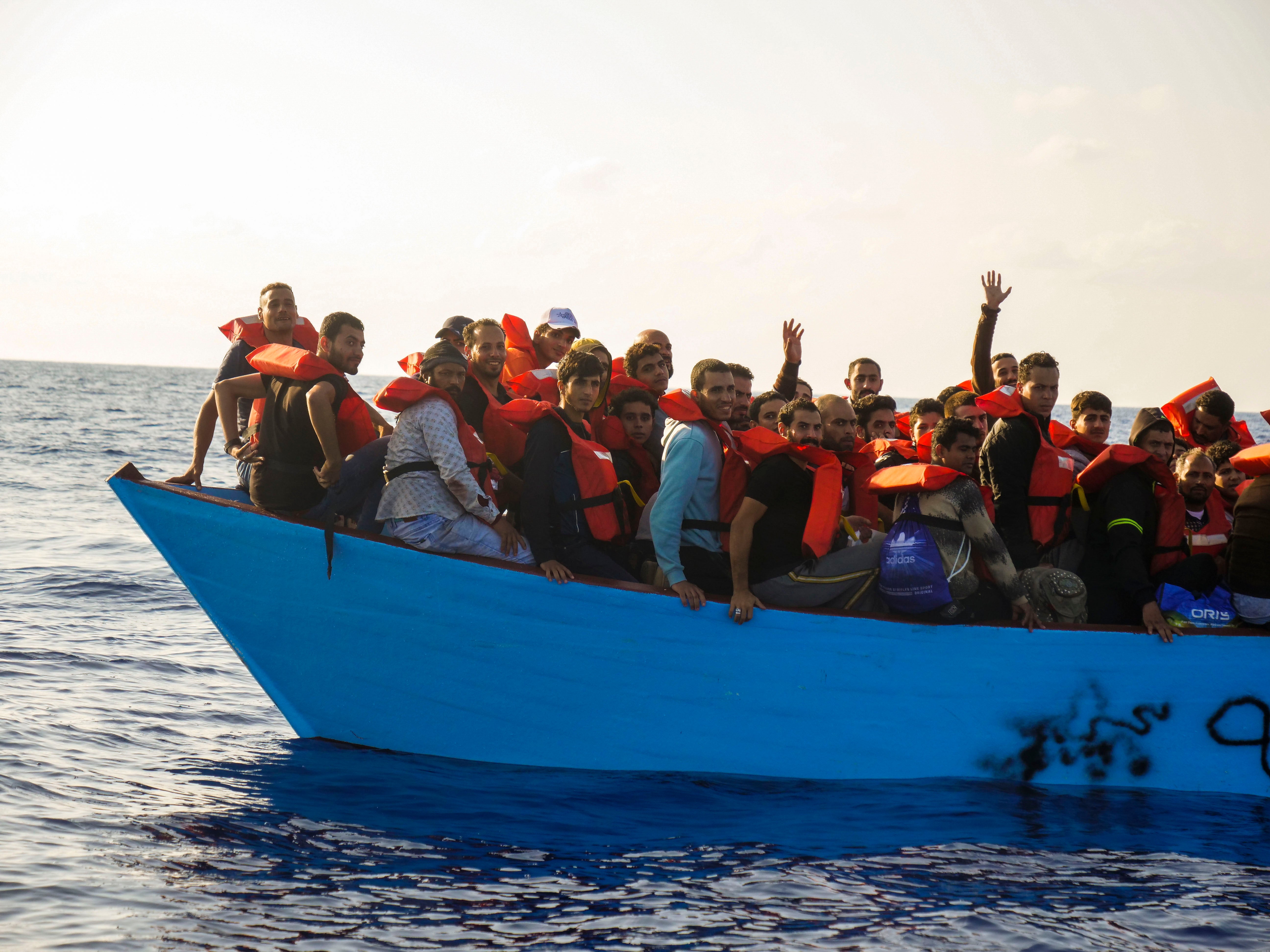What’s in the new EU migration and asylum deal?
EU states have been battling over how to deal with migration to European shores for a number of years

Your support helps us to tell the story
This election is still a dead heat, according to most polls. In a fight with such wafer-thin margins, we need reporters on the ground talking to the people Trump and Harris are courting. Your support allows us to keep sending journalists to the story.
The Independent is trusted by 27 million Americans from across the entire political spectrum every month. Unlike many other quality news outlets, we choose not to lock you out of our reporting and analysis with paywalls. But quality journalism must still be paid for.
Help us keep bring these critical stories to light. Your support makes all the difference.
The European Union reached an agreement on new rules to handle irregular arrivals of asylum seekers and migrants, a deal hailed as a breakthrough after almost a decade of bitter feuds on the issue.
Representatives of the European Parliament and of EU governments reached an accord after all-night talks on EU laws collectively called the New Pact on Migration and Asylum that should start taking effect next year.
Here are details of the EU agreement, the main issues and what comes next.
Why does it matter?
EU states have been trading blame over providing for the new arrivals since more than a million people - mostly fleeing the war in Syria - caught the bloc by surprise by reaching it across the Mediterranean in 2015.
The bloc has since tightened external borders and its asylum laws, and struck deals in the Middle East and North Africa to have more people stay there. EU data shows that fewer than 100,000 irregular migrants made to it Europe in 2020, but that has risen to more than 250,000 in the year to date.
The bloc hopes lower irregular immigration would allow EU countries to restart cooperation to spread more evenly the task of taking care of arriving refugees and migrants.
How does the new deal address that?
Each EU country would be assigned a share of the 30,000 people overall the bloc is expected to accommodate per year in its joint migration system at any given time.
That will be calculated based on the size of the country's GDP and population, the number of irregular border crossings including via sea rescue operations, and more.
Countries unwilling to take in people would alternatively be able to help their hosting peers through cash - at least 20,000 euros per person a year - equipment or personnel.
What else is new?
The agreement would introduce a new expedited border procedure for those deemed unlikely to win asylum to prevent them from lingering inside the bloc for years.
Their claims would be dealt with in a maximum of 12 weeks and, if rejected, they should be returned to their home countries within a further 12 weeks.
That mechanism would apply to all those deemed dangerous, uncooperative or coming from countries with low asylum recognition rates in the EU, such as India, Tunisia and Turkey.
EU countries could also apply the speedy procedure to people picked up in the sea, caught while trying to get in illegally or filing for asylum at a country's border rather than in advance.
Will it work in practice?
Before eventually endorsing it, Italy and Greece voiced concerns about whether the new system would prove workable, given some states' refusal to host people.
The southern countries worry about being overwhelmed, while those further away from the bloc's external borders tend to drag their feet on admitting arrivals and complex solidarity schemes take time to kick in.
Another challenge is keeping close tabs on the movement of people once they get inside Europe's zone of free travel.
What other issues are there, and who is against the deal?
Rights groups said the scheme risked reviving tragic scenes that unfolded on the Greek islands several years ago by creating more overcrowded migration camps on the edges of the EU.
They said the new plan could lead to protracted detention of minors and criticised it as focusing on keeping people away rather than helping those in need.
Criticism also came from Hungary and the former government of Poland, the EU's loudest voices against immigration from the Middle East and Africa.
Warsaw has refused to host any of the mainly-Muslim arrivals, though it has given shelter to millions of Ukrainians fleeing Russia's war.
What comes next?
The pact will start to be implemented from 2024 but could take two years to fully take effect.
Reuters
Subscribe to Independent Premium to bookmark this article
Want to bookmark your favourite articles and stories to read or reference later? Start your Independent Premium subscription today.
Join our commenting forum
Join thought-provoking conversations, follow other Independent readers and see their replies
Comments